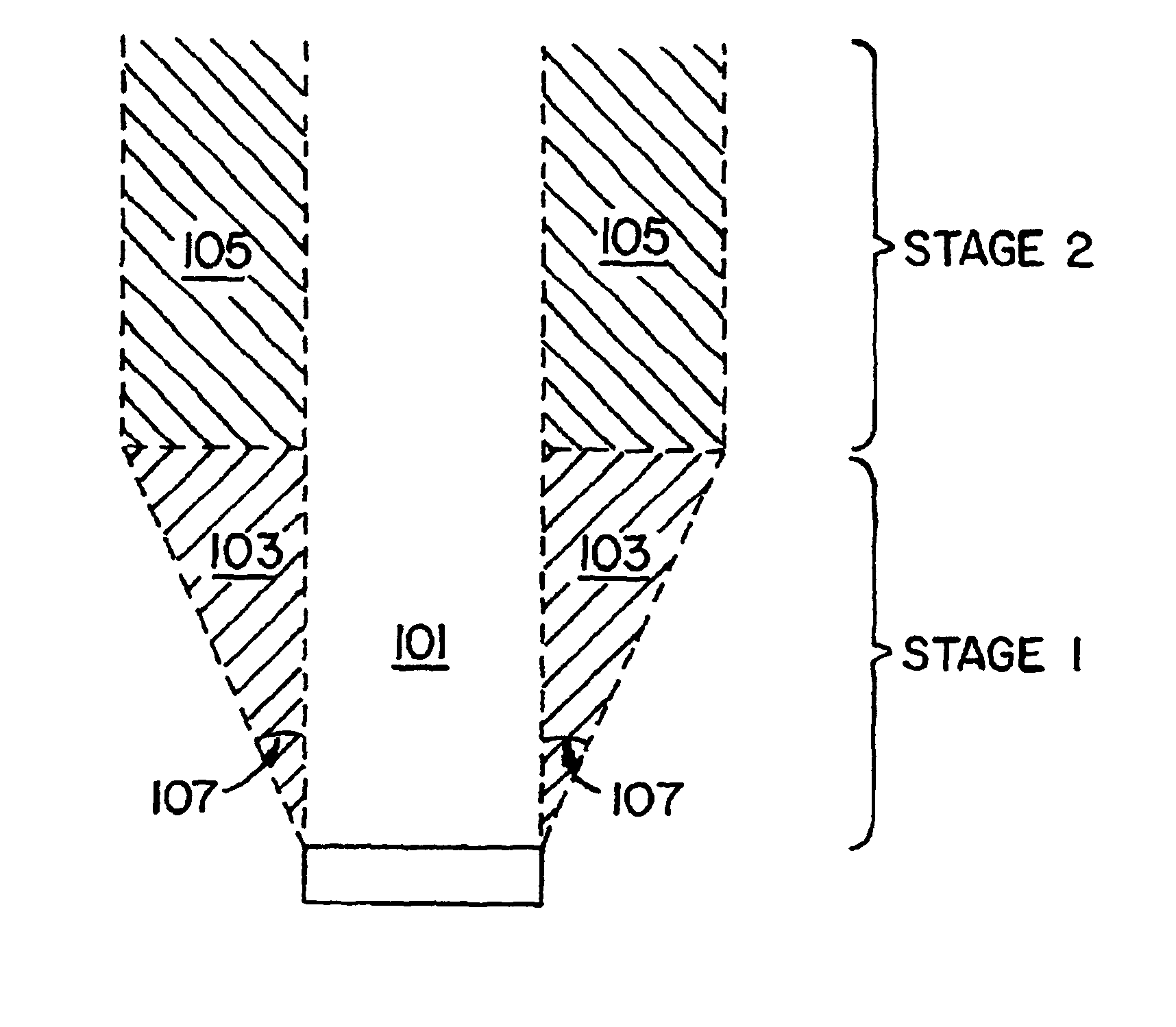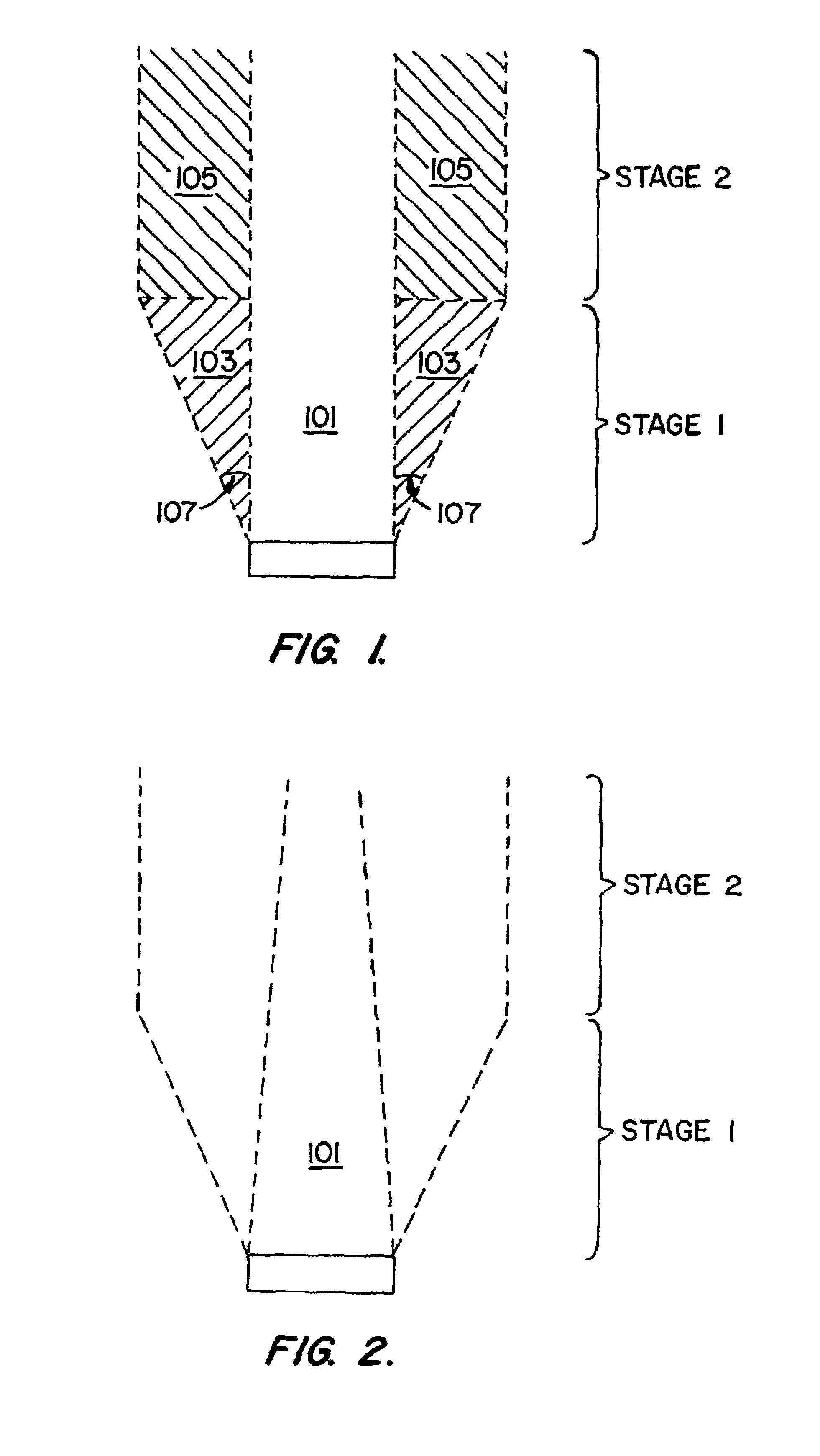Apparatus for growing low defect density silicon carbide
a silicon carbide and low defect density technology, applied in the field of silicon carbide, can solve the problems of high dislocation density, inability to grow bulk materials, and techniques that do not lend themselves to bulk material growth, so as to reduce the defect propagation and generation in laterally grown materials, reduce the defect density, and suppress the effect of lateral growth
- Summary
- Abstract
- Description
- Claims
- Application Information
AI Technical Summary
Benefits of technology
Problems solved by technology
Method used
Image
Examples
Embodiment Construction
a growth period of approximately 22 hours;
[0022]FIG. 10 illustrates a one dimensional temperature distribution over the ring element cell wall and the crystal interface;
[0023]FIG. 11 illustrates the ring element wall locations and the crystal interface locations that correspond to the data points shown in FIG. 10;
[0024]FIG. 12 illustrates the distribution of the principal component of the thermal elastic stress tensor as computed for the temperature distributions shown in FIG. 6; and
[0025]FIG. 13 illustrates the distribution of the principal component of the thermal elastic stress tensor as computed for the temperature distributions shown in FIG. 8.
DESCRIPTION OF THE SPECIFIC EMBODIMENTS
[0026]The dislocations in (0001) silicon carbide (SiC) seed crystals are primarily threading and screw dislocations in the crystal direction. Micropipe defects are basically screw dislocations with a Burger's vector that is so large that the core of the screw is empty. The inventors have found that ...
PUM
 Login to View More
Login to View More Abstract
Description
Claims
Application Information
 Login to View More
Login to View More - R&D
- Intellectual Property
- Life Sciences
- Materials
- Tech Scout
- Unparalleled Data Quality
- Higher Quality Content
- 60% Fewer Hallucinations
Browse by: Latest US Patents, China's latest patents, Technical Efficacy Thesaurus, Application Domain, Technology Topic, Popular Technical Reports.
© 2025 PatSnap. All rights reserved.Legal|Privacy policy|Modern Slavery Act Transparency Statement|Sitemap|About US| Contact US: help@patsnap.com



